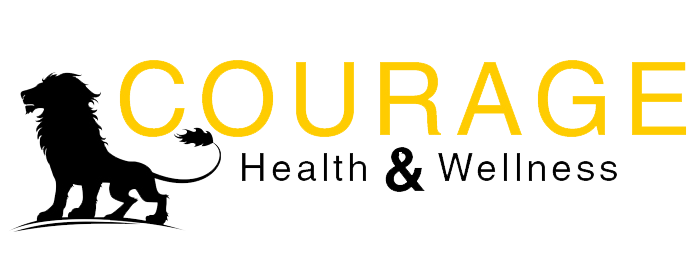The Best Way to Control Unwanted Thoughts

By: Editorial Staff
Categories:
The Best Way to Control Unwanted Thoughts
Thought preemption is a proactive—not reactive—way to control unwanted thoughts.
Posted July 20, 2022 | By: Christopher Bergland
KEY POINTS
- Reactive cognitive control often makes unwanted thoughts peskier and keeps them top of mind in a “thought loop.”
- Deliberately trying to suppress an unwanted thought (“Don’t think of a white bear!”) tends to keep it top of mind.
- Proactive cognitive control can preemptively keep unwanted thoughts at bay and stop repetitive “thought looping.”

“Try to pose for yourself this task: not to think of a polar bear, and you will see that the cursed thing will come to mind every minute.” —Fyodor Dostoevsky, Winter Notes on Summer Impressions (1863)
Controlling unwanted thoughts is tricky. As “white bear” or “pink elephant” thought experiments remind us, when people are explicitly told not to think about pink elephants or white polar bears, they’re much more likely to think about these animals. Hence, the so-called “white bear problem” represents how deliberately attempting to suppress unwanted or intrusive thoughts actually makes them more likely to stay top of mind.
In the 1980s, Daniel Wegner led a series of 5-minute experiments in which participants were instructed not to think of a white bear—but to ring a bell if they did. Paradoxically, the harder people tried not to think about a white bear, the more often they had to ring the bell because white polar bears were all they could think about (Wegner et al., 1987).
The Paradox of Thought Suppression
After establishing the paradoxical effects of thought suppression, Wegner developed his “ironic processes of mental control” theory (1994) which describes the phenomenon of unwanted thoughts being more likely to stay top of mind when someone tries really hard to suppress them.
So, what’s the best way to overcome the paradoxical “white bear problem” and control unwanted thoughts? A new study, aptly titled “If You Don’t Let It In, You Don’t Have to Get It Out,” suggests that proactive thought preemption is the best way to control unwanted thoughts. This paper (Fradkin & Eldar, 2022) was published on July 14 in the peer-reviewed journal PLOS Computational Biology.
The research question for this study: “Can we preempt an unwanted thought from coming to mind, similarly to how we can avoid taking an unwanted action?” To answer this question, Isaac Fradkin and Eran Eldar recruited 80 English-speaking adults to participate in a free-association task during which study participants were instructed to avoid repeating specific word associations after being given verbal cues.
Using computational analysis, the researchers compared the effectiveness of reactive cognitive control vs. proactive cognitive control and found that the latter is much more effective at controlling unwanted thoughts.
The Difference Between Reactive and Proactive Cognitive Control
Reactive cognitive control typically involves rejecting and replacing a thought after it’s reached consciousness. In contrast, proactive cognitive control involves keeping an unwanted thought from coming to mind before it takes hold and starts to dominate someone’s consciousness as part of a thought loop.
Notably, based on the “white bear” paradox of thought suppression, the catch-22 of preemptive thought control is that if you consciously try to suppress a specific thought, you inevitably have to think about what you’re suppressing, which keeps it top of mind.
Although it’s theoretically possible to preempt unwanted thoughts from entering consciousness, it isn’t easy. Most study participants used reactive cognitive control to suppress an unwanted thought after it had reached consciousness.
“Our findings suggest that thoughts are self-reinforcing. Thinking a thought increases its memory strength and the probability that it will recur,” the authors explain. “In other words, every time we have to reactively reject an unwanted association, it has the potential to become even stronger. Critically, however, we also found that people can partially preempt this process if they want to ensure that this thought comes to mind as little as possible.”
“Although [study participants] could not avoid unwanted thoughts, they could ensure that thinking an unwanted thought does not increase the probability of it coming to mind again,” Fradkin said in a July 2022 PLOS blog about this recent study.
Mastering the Art of Proactive Cognitive Control
Although Fradkin and Elder don’t give specific tips for improving one’s ability to preemptively keep unwanted thoughts from coming to mind, over the years, I’ve developed a few tricks for overcoming the paradoxical effects of thought suppression (a.k.a. the “white bear problem”).
As an ultra-endurance athlete, I’ve spent decades trying to control my thoughts during extreme distance events. Just like in daily life, expending mental energy trying to suppress unwanted thoughts during a race is draining and makes it difficult to create frictionless flow states that facilitate peak performance.
Based on my lived experience, the key to effective thought preemption is giving it the light touch and not trying too hard to wrestle or strongarm unwanted thoughts into submission. Based on Wegner’s ironic process theory, it’s a given that any time your mind becomes preoccupied with suppressing a particular thought, you’re going to think about it more. Therefore, you have to be sly and masterfully outfox yourself using a combination of executive functions and imagination.
In a chapter about sports-related mindfulness in The Athlete’s Way, I describe a few simple visualizations that can preemptively stop unwanted thoughts from “looping.” For me, the best way to outsmart intrusive thoughts without overthinking my attempts to suppress them is to visualize wanted (positive) thoughts being covered in Velcro and Super Glue, which makes them stick to my prefrontal cortex. On the flip side, in my mind’s eye, unwanted (negative) thoughts are Teflon coated and slathered in Vaseline, which makes them very slippery. This visualization makes it harder for unwanted thoughts to stick or take up real estate in the front of my brain.
When proactively clearing my mind of an unwanted thought, I don’t forcibly try to keep it out. Instead, I accept that unwanted thoughts will always be floating around in my head and don’t waste mental energy trying to stop them from ever intruding. Instead, if an unwanted thought surfaces, I casually nudge it away from being the focus of my attention and think about something else.
In an out-of-sight-out-of-mind kind of way, I know that if I can prevent my frontal lobes from glomming onto an unwanted thought for a few seconds, it will gradually dissolve into the background of consciousness and slip away.
Whenever I notice an unwanted thought percolating on the horizon or hanging out in the periphery of my mind, I relax the backs of my eyes and, without exerting too much rigid mental control, visualize it slipping away. When I feel it dissolving into the background, without missing a beat, I quickly refocus my attention on something else and don’t give the unwanted thought another millisecond of rumination.
Once you’ve decided not to let an intrusive thought take up too much brain space, if the unwanted thought bubbles up into consciousness, don’t get upset or panicky; instead, make it “slippery” and let it go nonchalantly. Cultivating a laissez-faire or Que será, será (what will be, will be) attitude when unwanted thoughts start to seem intrusive takes away their “looping” power because you don’t dwell on them for long.
Take-Home Message: The more forcibly you try to suppress a thought, the peskier it becomes and, paradoxically, the harder it is to suppress. Preemptive thought control that doesn’t succumb to the “white bear problem” requires some finesse. When practicing proactive cognitive control, keep Wegner’s “ironic process theory” top of mind and don’t overthink the thought suppression process.
References
Isaac Fradkin and Eran Eldar. “If You Don’t Let It In, You Don’t Have to Get It Out: Thought Preemption as a Method to Control Unwanted Thoughts.” PLOS Computational Biology (First published: July 14, 2022) DOI: 10.1371/journal.pcbi.1010285
Daniel M. Wegner, David J. Schneider, Samuel R. Carter III, and Teri L. White. “Paradoxical Effects of Thought Suppression.” Journal of Personality and Social Psychology (First published: July 1987) DOI: 10.1037//0022-3514.53.1.5
Daniel M. Wegner. “Ironic Processes of Mental Control.” Psychological Review (First published: January 1994) DOI: 10.1037/0033-295X.101.1.34
